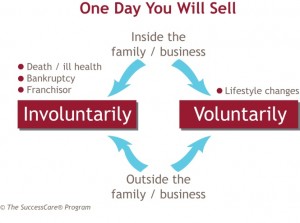By Grant Robertson
As the owner of a construction company, your primary role is to move business forward. Currently you drive in the fast lane, covering as much distance as you can in the limited amount of time available. Yet you know you can’t stay in the fast lane forever. At some point you will run out of gas.
In our 2012 survey of Canadian CEOs, we determined that their current focus is on those actions and strategies required to secure the long-term success of their business. However, only 25 per cent said they had a plan in place for the ultimate strategic direction — the transition of their business.
Demographics indicate that 40 per cent of today’s business owners plan to exit in just one car lease (five years) rising to more than 70 per cent in two car leases (10 years). Others will undoubtedly experience an involuntary exit as a result of death, disability or a disagreement. Consider the case of John below.
John Smith is 65 years old and under pressure from his family to retire. However, John has a great vision for the future of his construction business and there are many things he still wants to accomplish. He is certainly not ready to plan his exit.
John’s position is one all veteran entrepreneurs can relate to – so much to do but so little time left. The last thing on their minds is exiting the business before they are ready. How and when to transition their business is undoubtedly a choice every business owner should have.
What John doesn’t realize is that, by not planning ahead, he is reducing the likelihood that he will have that choice. At the same time, he is diminishing the chances of realizing his vision for the business. If John truly wants to achieve his vision, he needs to consider what’s required to ensure his goals can still be met, even if he is not physically able to lead the charge.
One day John will sell – either voluntarily at a time that is right for him, or involuntarily when death, ill health, reduced profitability or other external factors drive his decision. Whether or not any money changes hands, he has to choose one or the other. John needs to be proactive in ensuring he has the choice to sell voluntarily.
He then has to decide who he will sell to. Again, he only has two choices: He can sell to someone inside the family or business (an internal sale), or to someone outside the family or business (an external sale). There are steps John should take ahead of time to give him maximum choice in selecting the right buyer.
Just like any other project John has managed during his 40-plus years as the owner/manager of his company, enabling a choice around when to sell and to who needs a concrete plan of action and regular monitoring.
The good news is that planning for an internal sale also enables the choice to sell externally. For example, preparing for an internal sale involves building a management team that can carry the torch beyond John’s tenure. While John is grooming a prospective successor for a possible internal sale, he is also enhancing one of the key drivers for a viable external sale. This gives him more control over the timing of an external sale and he can avoid selling during a buyer’s market
Preparing for a voluntary sale
When it comes to preparing for an inevitable sale, the ultimate objective is to build a system that eventually sees the day-to-day decision-making pass from the primary to one or more persons within the business. This approach creates a management group to successfully carry the business should something happen to you. Building this system takes years and is likely the most critical part of the overall process to enabling an internal sale.
Essentially begin by imagining yourself out of the picture. How would the business function? What needs to be done to ensure it can function? How long will that take? What are the priorities? This process is referred to as “professionalizing the business” and it incorporates the following steps:
- Spend time to identify what’s most important with regard to the future direction of the business.
- Share that vision with key family members and the management team to define a group focus or common interest in moving forward.
- Involve this group in developing a concrete plan to achieve your common interest.
- Look at the business from the viewpoint of a prospective buyer. Since you know all the soft points you can identify changes which should be made to increase the value of the business.
- Look closely at your own role and identify the areas that do not utilize your core strengths.
- Match these functions to people who would get more energy from working in that area. This is the beginning of the process to ensuring the business can function well without you.
- Assign the authority and accountability to go along with each of the responsibilities awarded.
- Create a mentoring plan to increase the skill sets and confidence of the management team and groom prospective successors.
- Check how the system is running without you by taking increasingly longer vacations. If you are reluctant to take an extended vacation, chances are the business is not yet ready for sale.
- Work with your accountant and lawyer to ensure the tax structures are best for your objectives.
- Look to ensuring the stakeholders are engaged by build an advisory board.
It is important to recognize this transition is a long-term objective rather than a short-term goal. It is a future-focused process for creating an investment that is attractive to buyers from both inside and outside the business because prospective buyers can see how the business can continue to thrive without you.
To ensure a successful long-term future for their organizations in a fast growing industry, construction company owners need to be thinking about a plan now, looking to fill the skilled labour gap, investing in workforce training to identify possible successors, and promoting from within.
Grant Robinson, FCPA,FCPA, ia a partner, BDOCanada LLP and national director of the BDOSuccessCareProgram. He can be reached at gcrobinson@bdo.ca.









